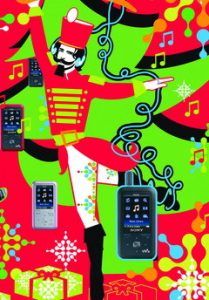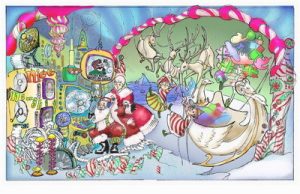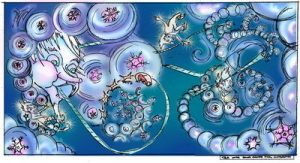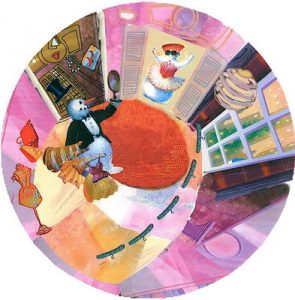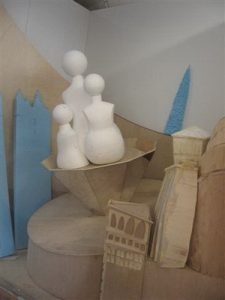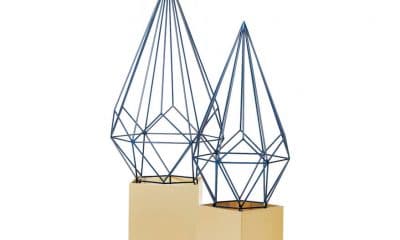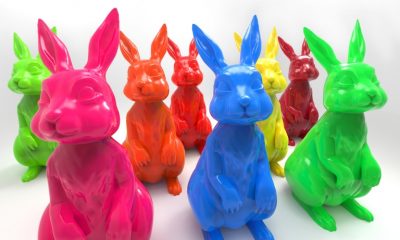Henry Callahan, the legendary visual merchandiser from Saks Fifth Avenue, once said, “We make magic, and we create it with nothing.” Well, not entirely “nothing.” For several New York retailers getting ready to produce their annual holiday windowfests, the magic is being created with lots of time, collaboration and ideas that come out of nowhere – like a workout at the gym.
“We were still putting up our 2006 windows,” says Paul Olszewski, director of windows at Macy’s Herald Square, “when I had this idea while on the elliptical machine. I was on the 36th floor gym of my apartment building, looking out over the city at night. I imagined Santa Claus flying across the sky and that led to a holiday window notion: What about putting Santa in various unique situations as he makes his Christmas Eve rounds?”
In January, as the ’06 windows were coming down, Olszewski met with the production team at Spaeth Design Inc., the New York-based fabricator. Then, as the idea gelled, he sat down with a musical composer to get a theme for his idea, which was shaping up as “Santa’s Big Night” – a grouping of seven windows following Santa’s journey, from enchanted ice caves complete with an interactive naughty-and-nice meter to rollercoaster rides and whirlwind outer-space adventures. “I even went to Six Flags Great Adventure and rode the rollercoaster so I could get the sense of what the experience is like,” Olszewski says.
So there’s music, a mockup of a rollercoaster and even, in one window, a Willard Scott commentary on Santa’s progress. A budget-buster? “Well, I had to get Macy’s approval, of course,” Olszewski acknowledges. “We had an initial set of drawings done by an illustrator in black and white, to conceptualize our idea, and then we added color – in this case, a 1960s color palette with bright shades and funky patterns. Once the drawings were complete, we had to seek approval from the management team – the store manager, director of stores, the marketing department, all the way up to our ceo.” And if the request was for more than budgeted? “We have to edit,” he says.
But Macy’s, like most retailers, is willing to invest in its holiday windows, even for only the four weeks they’re up. Christmas is a big season for any retailer’s bottom line, of course. And the windows have become almost a civic duty – for Macy’s, they’re up there with the Thanksgiving Day Parade. “Macy’s holiday windows are a gift to the city,” Olszewski says. “They’re a New York tradition. They’re also entertainment; they make people want to come to Macy’s. They’re a synergy of art and fashion, and they will always be part of the Macy’s brand.” As such, Olszewski feels he must measure up to his toughest critic – himself. He does not want to disappoint or lose the momentum established each year. “Pressure comes with the territory,” he says, “but the expectations are a driving force.”
Saks Fifth Avenue is another New York retailing icon with an annual challenge to meet. For the last few years, the fashion retailer has been “reinventing” the snowflake. LED flakes have tumbled down the side of the building, twinkling and blinking to music, and been replicated in the windows and inside the store.
This year’s reinvention was inspired by “Snowpeople,” a book written exclusively for Saks by Ryan and Rick Zeeb and illustrated by Trish Burgio. It’s about the dilemma facing the loveable crystals when they realize that although they all look alike, no two snowflakes are exactly the same.
As with Macy’s Olszewski, Saks’ Tim Wisgerhof and his team began this process a year ago. The ideas get nailed down in January and February, the fabricator is brought into the process (Saks also uses Spaeth Design) and then the approval process begins. At Saks, the window display is generally a collaboration of the fashion designer, store merchants and the window team. “Windows don’t exist in a vacuum,” says Wisgerhof. “They start with the fashion designer who makes the garment. Then the store buying team determines content, the window team develops presentation and the lighting designer adds the final drama. The merchandise is the script.”
Wisgerhof learned, as a young theatrical set designer, that “if they’re raving about your scenery, you did a bad job.” The merchandise must lead the story, it’s the beginning of a conversation with the customer.
Budget is also always a concern. Wisgerhof’s approach is to start with more and cull it down. “Our job is to edit,” he says. “Fiscal constraints make you a better problem-solver, forcing you to recycle and reinvent. Find other ways to use things. Simplifying is clarifying. It’s all about execution.”
Yet a different kind of challenge every year faces Christine Belich, visual merchandising vp at Sony Style. The store on Madison Avenue, between 53rd and 54th streets, has to be enhancing, enchanting and somehow high-tech and interactive as well, given Sony’s position as a consumer electronics leader.
This year’s concept took a cue from the corporate marketing campaign: “HDNA high definition is in our DNA.” Belich and her team grabbed onto the molecular symbol developed for the summer promotion and metamorphosed it into a snowflake. All graphics at that point related back to the snowflake. From that, the tag line was created: “What to give. What to get. Hint, it’s a SONY.” As with many consumer electronics retailers, the focus of the message is aimed at women: “It’s easy to become knowledgeable about this stuff and we can help.”
Sony’s signature is to bring the imagery outside of the store. This year, giant fabricated gift boxes extend away from the building a few inches, making it appear that the window is inside the box top. This technique, which has become a central element of Sony’s window displays, has to be engineered to be structurally sound and to withstand the elements, such as wind and rain. Olfactory senses are also tweaked as holiday scent is wafted onto the street. The three-dimensional snowflakes dance in the windows and meander through the store.
Though the product is technical, the Sony message must be as magical and entertaining as those of Macy’s and Saks. “The holiday windows are a magic show that creates curiosity and intrigue,” Belich says. “They’re a form of drama and art, getting things out on the street that people never saw before. They’re a fantasy that sparks the mind and moves the emotions. When you infuse art into merchandising, you elevate the product and celebrate your brand.”
Look for VM+SD’s annual review of holiday windows in the February 2008 issue and online at www.vmsd.com.
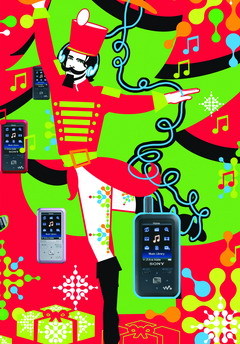

 Photo Gallery2 weeks ago
Photo Gallery2 weeks ago
 Headlines6 days ago
Headlines6 days ago
 Headlines2 weeks ago
Headlines2 weeks ago
 Headlines2 weeks ago
Headlines2 weeks ago
 Headlines5 days ago
Headlines5 days ago
 Headlines2 weeks ago
Headlines2 weeks ago
 Headlines4 days ago
Headlines4 days ago
 Designer Dozen1 week ago
Designer Dozen1 week ago
